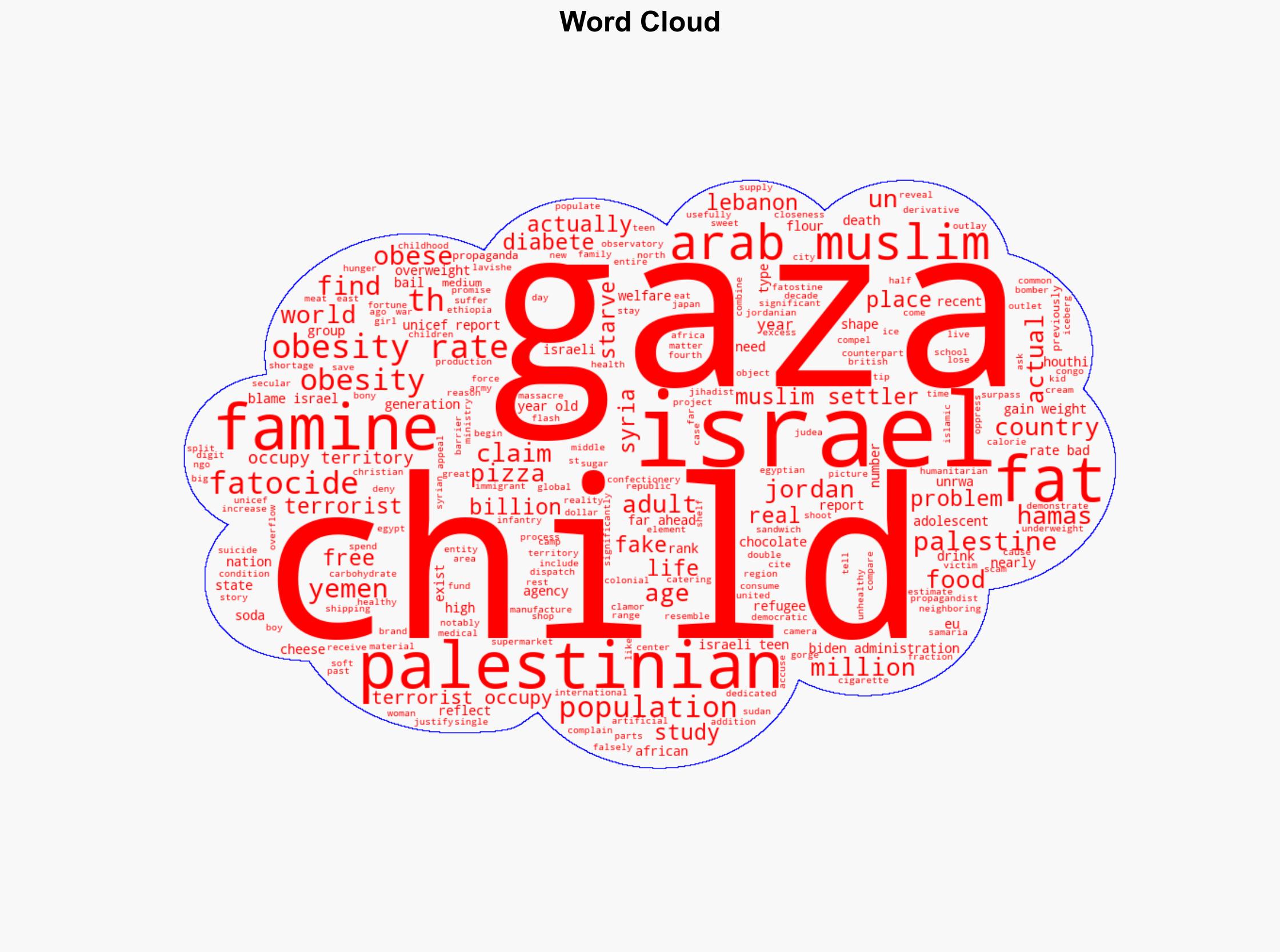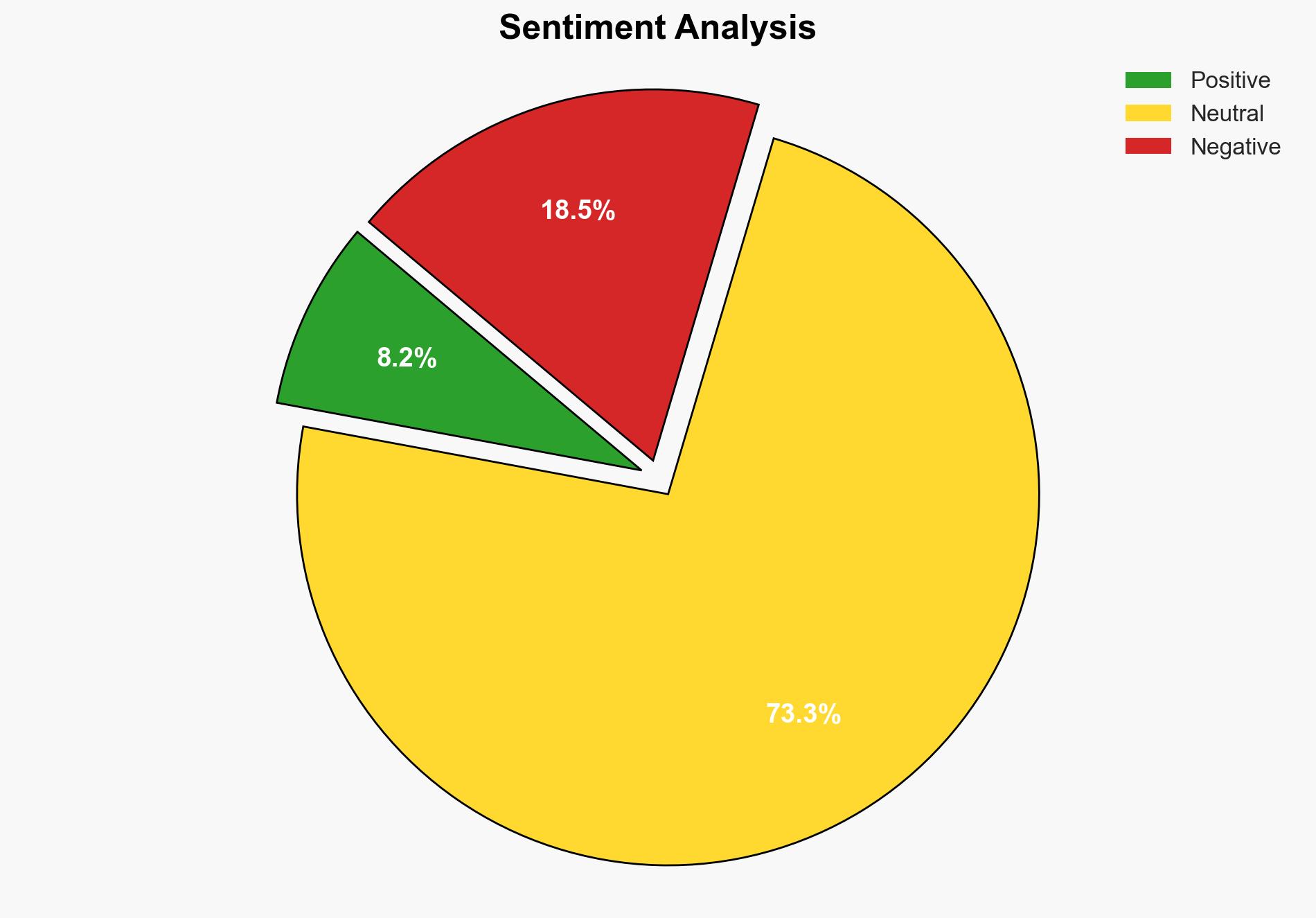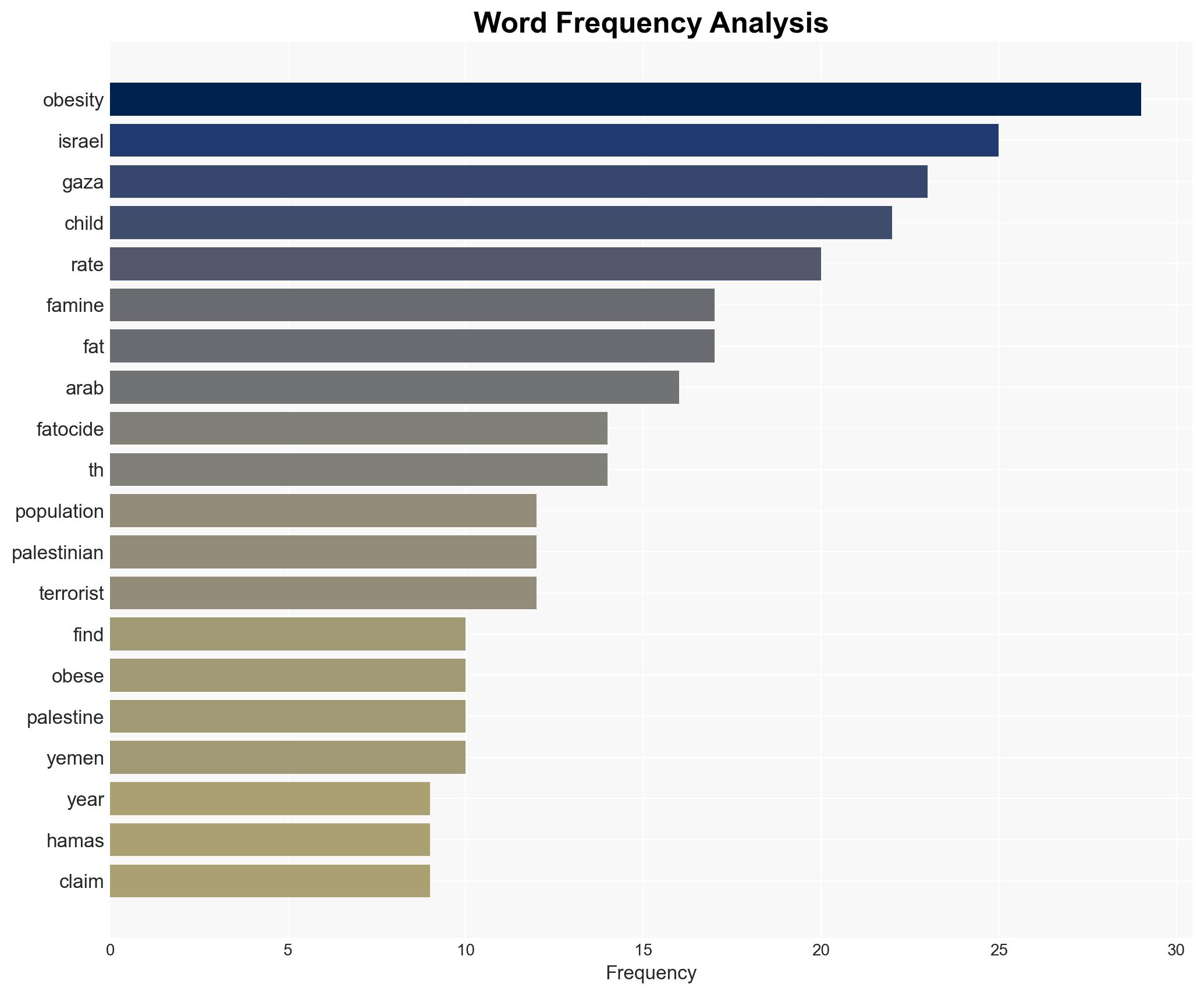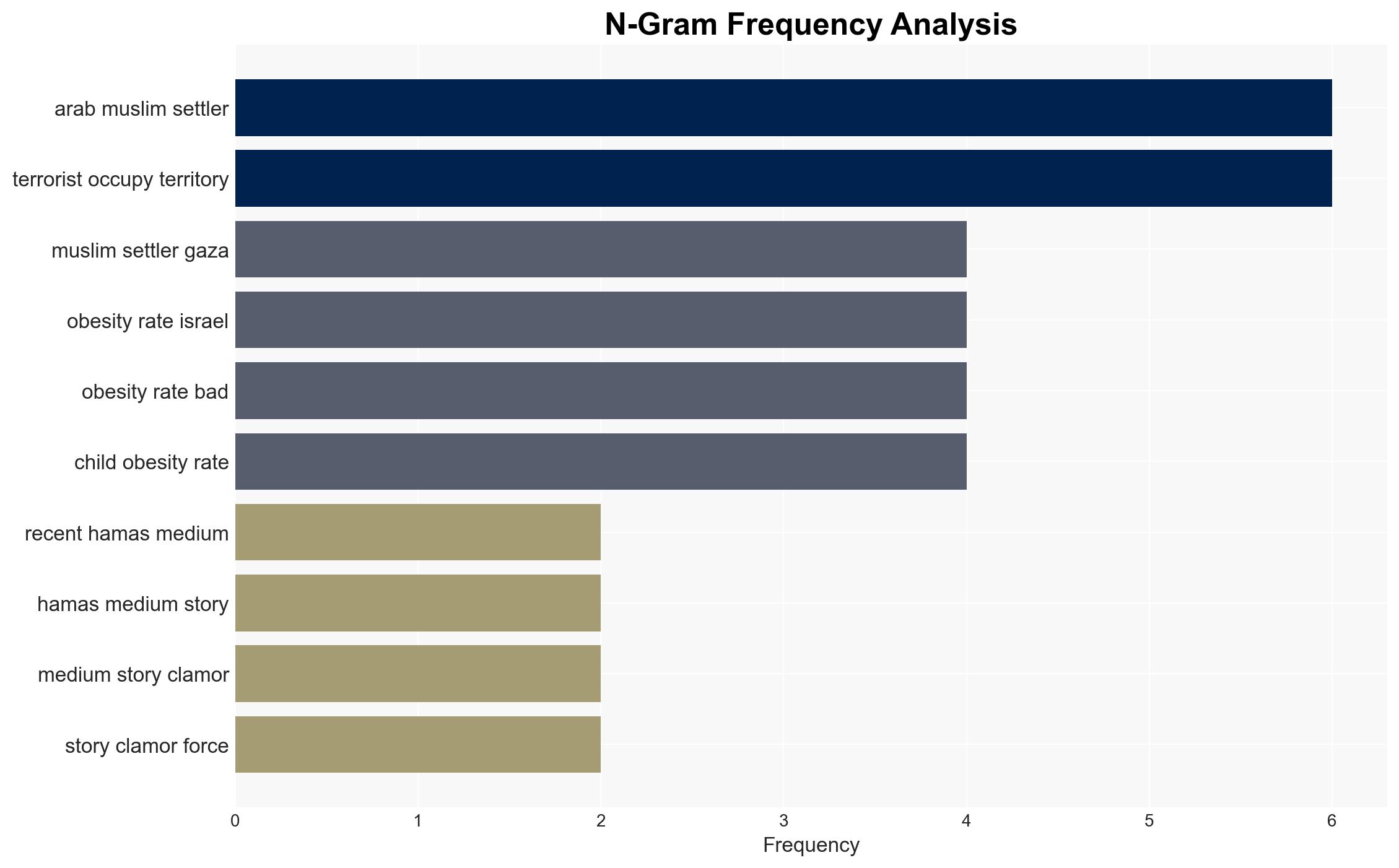UN Report shows Gazan Palestinian Arabs fatter than Israelis – Israelnationalnews.com
Published on: 2025-11-15
AI-powered OSINT brief from verified open sources. Automated NLP signal extraction with human verification. See our Methodology and Why WorldWideWatchers.
Intelligence Report:
1. BLUF (Bottom Line Up Front)
The report suggests that obesity rates in Gaza are higher than in Israel, challenging narratives of widespread famine in Gaza. The most supported hypothesis is that the high obesity rates are a result of dietary habits and economic conditions rather than a deliberate misinformation campaign by Hamas. Confidence level: Moderate. Recommended action: Monitor regional health data and narratives for potential misinformation and humanitarian needs.
2. Competing Hypotheses
Hypothesis 1: The high obesity rates in Gaza are primarily due to poor dietary habits and economic conditions, not indicative of a lack of food resources.
Hypothesis 2: The obesity statistics are part of a misinformation campaign by Hamas to counter claims of famine and manipulate international perception.
Hypothesis 1 is more likely due to corroborating evidence from UNICEF and other health studies indicating regional dietary patterns. Hypothesis 2 lacks direct evidence and relies on assumptions about Hamas’s strategic communication goals.
3. Key Assumptions and Red Flags
Assumptions: The data from UNICEF and other health organizations are accurate and unbiased. Economic conditions in Gaza lead to consumption of cheaper, calorie-dense foods.
Red Flags: Potential bias in the original report source, Israelnationalnews.com, which may have political motivations. Lack of direct evidence linking Hamas to a deliberate misinformation campaign.
4. Implications and Strategic Risks
The narrative of obesity versus famine could affect international aid distribution and policy decisions. If misrepresented, it could lead to reduced humanitarian support or misallocation of resources. Additionally, it may influence regional political dynamics and perceptions of the Israeli-Palestinian conflict.
5. Recommendations and Outlook
- Actionable steps: Verify health data with independent sources, engage with local NGOs for ground truth, and prepare for potential shifts in international aid policy.
- Best scenario: Accurate data leads to targeted aid and improved health outcomes.
- Worst scenario: Misinformation leads to reduced aid and increased regional tensions.
- Most-likely scenario: Continued debate over health statistics with moderate impact on aid and policy.
6. Key Individuals and Entities
Hamas (Governing authority in Gaza), UNICEF (Data provider), UNRWA (Aid organization in Gaza).
7. Thematic Tags
Counter-Terrorism, Public Health, Information Warfare, Middle East Politics
Structured Analytic Techniques Applied
- ACH 2.0: Reconstruct likely threat actor intentions via hypothesis testing and structured refutation.
- Indicators Development: Track radicalization signals and propaganda patterns to anticipate operational planning.
- Narrative Pattern Analysis: Analyze spread/adaptation of ideological narratives for recruitment/incitement signals.
Explore more:
Counter-Terrorism Briefs ·
Daily Summary ·
Support us
·





